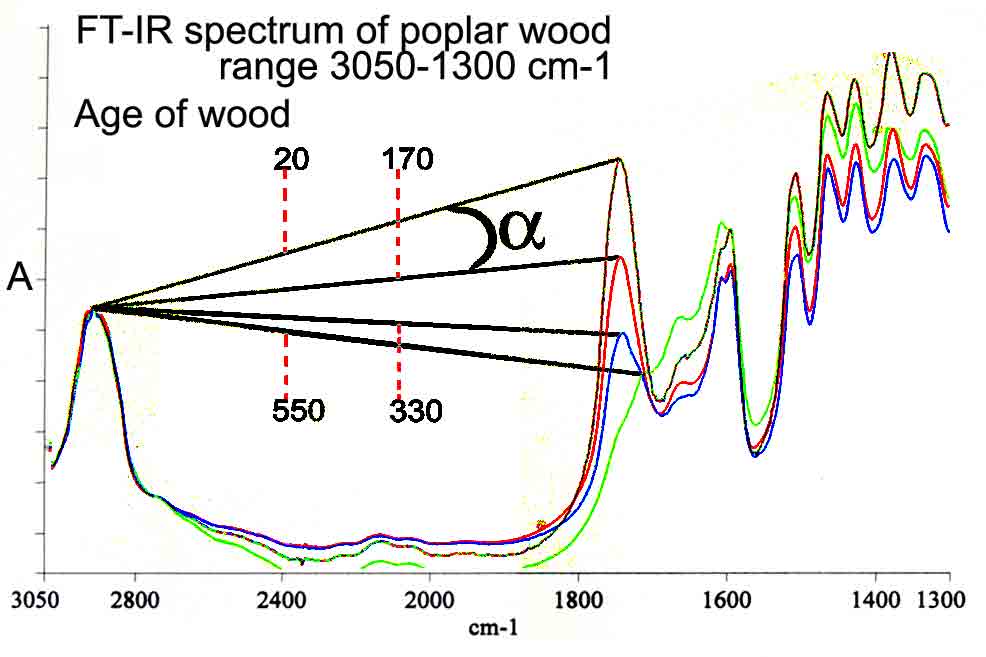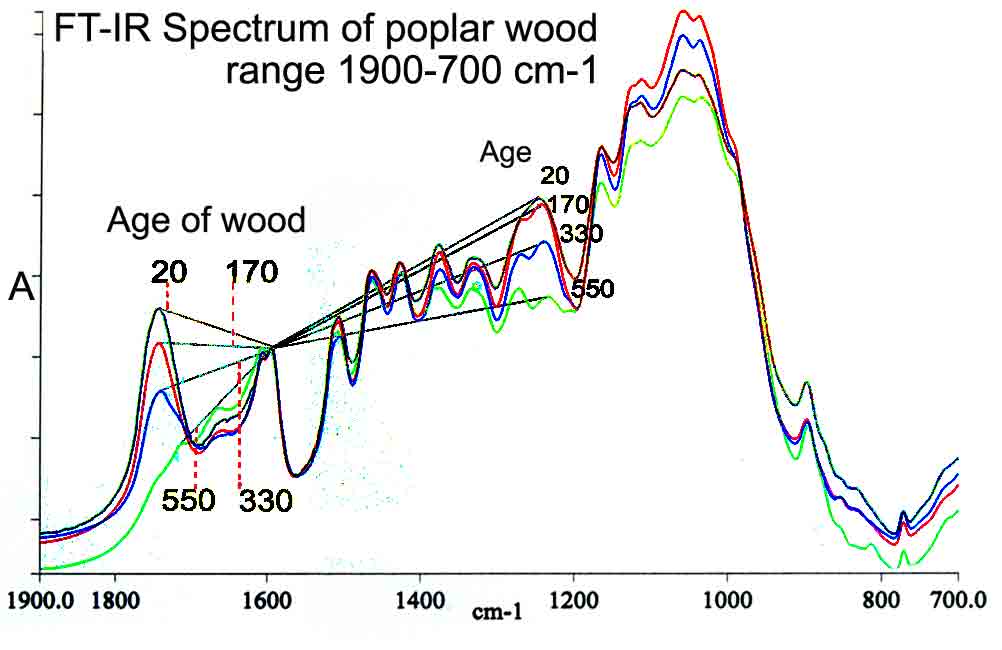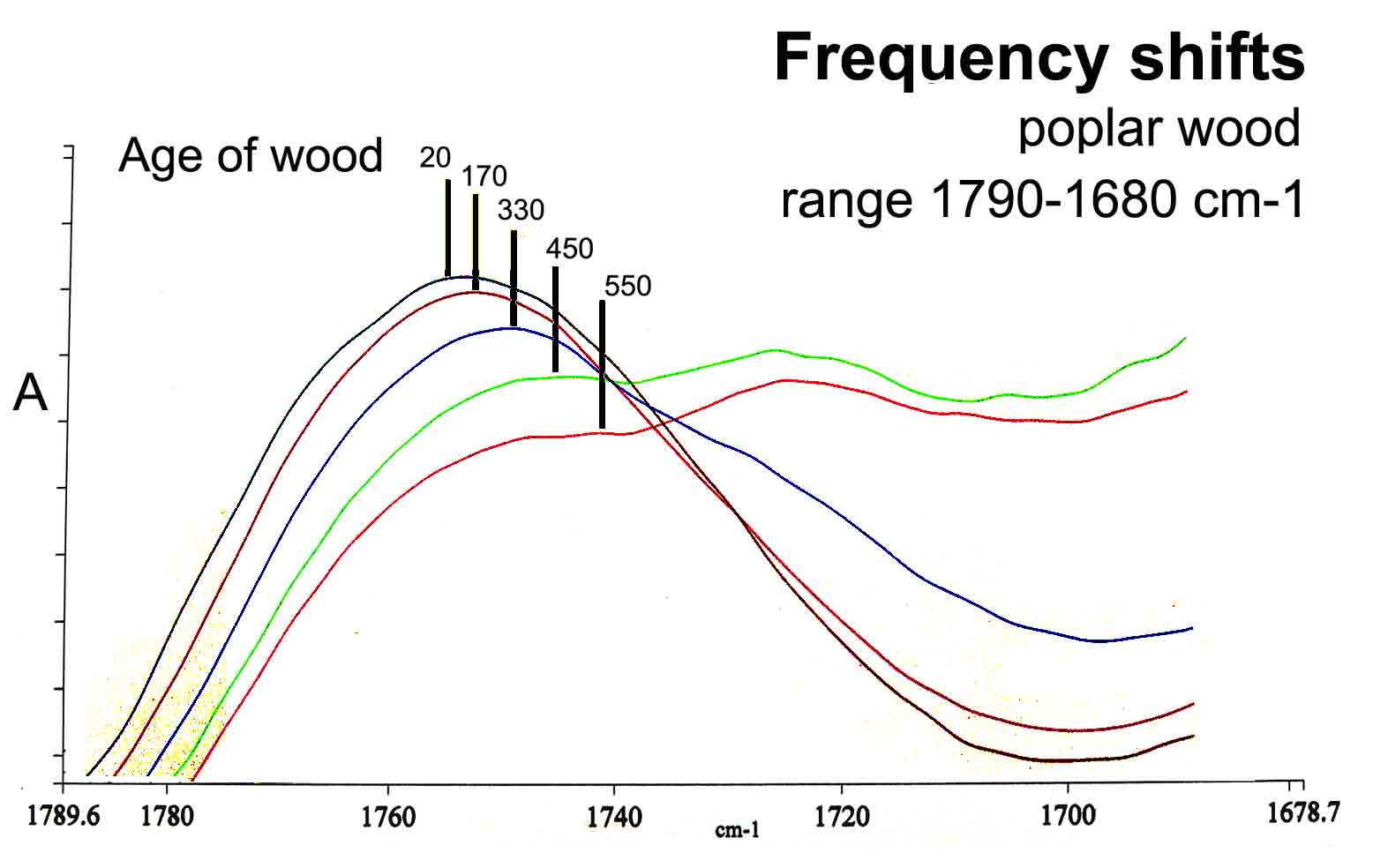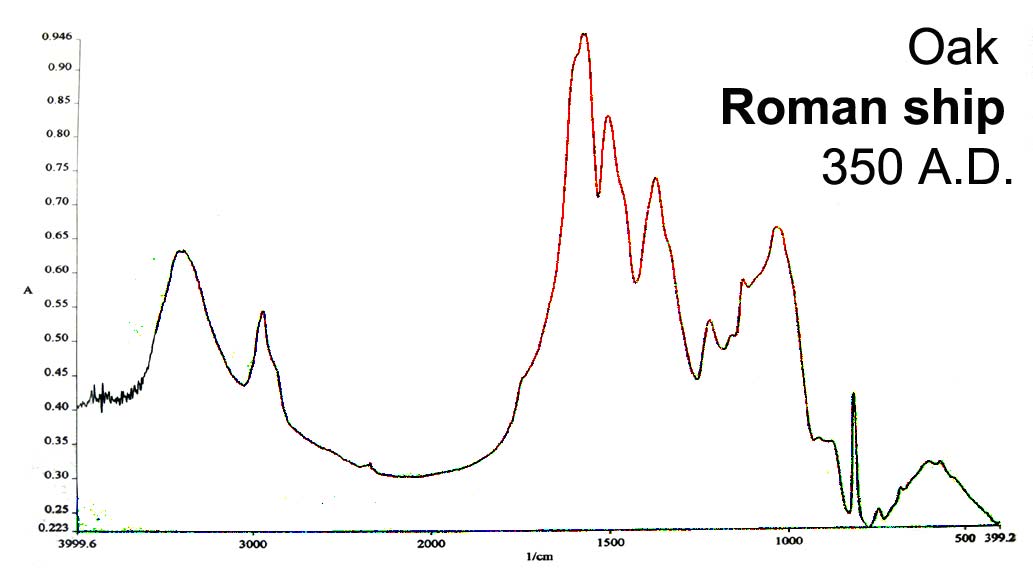|
||
|
Infrared spectroscopy is not a new method or a new discovery. New is only its application for the ascertainment of age and authenticity in art. It has been used for decades the world over by all chemical and pharmaceutical companies with thousands of instruments and with the same programme and equipment as the ones used by the laboratory of the Museo d’Arte e Scienza. Its extreme reliability, accuracy and facility of use have made IR spectroscopy in all fields where it can be applied the number one scientific method. Spectroscopic dating is based on two well-known factors: · All the natural materials on earth, including those used for creating art objects, are compounds of specific molecules. · Some particular molecules undergo changes with the passage of time.
The IR spectrum of
wood shows its molecules or groups of molecules as peaks and
valleys (Figures 1, 2). Signs of age caused by
evaporation, oxidation and new combinations cause the
lowering of some absorption peaks and, to a lesser extent, a
shift in the same (Figure 3).
1 – The graphic
evaluation of the curve (Spectrography) |
||
 |
|
Figure 2 |
 |
||
|
Figure1 |
|
|
|
2 – The evaluation of frequency shifts (Spectroscopy) The discovery of shifts in absorption frequencies in spectroscopic analysis has boosted accuracy over the years to an unexpected extent and was inexplicably high in the first few years. (Figure 3) - The diagram to the right is only one example of the many characteristics of a spectrum. |
 |
|
|
||
 |
Figure 4
Research in collaboration with a German |
|
|
The application of spectroscopic analysis for the dating of
organic materials is patented |
||